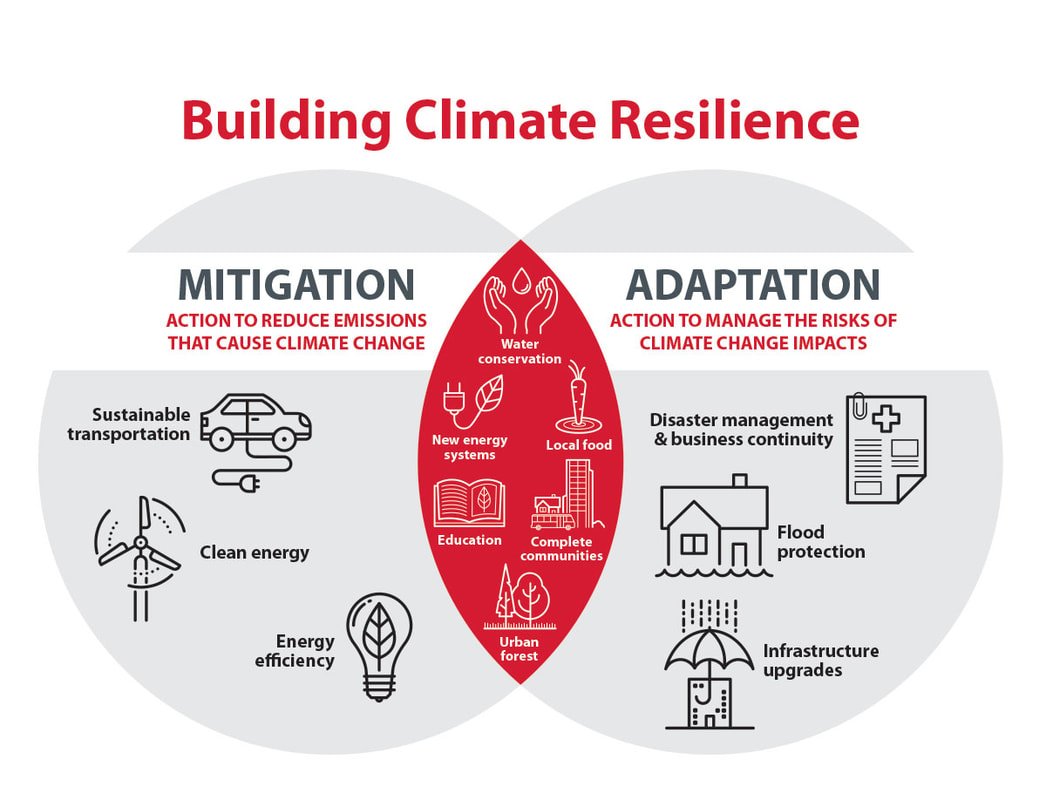Climate Change
Climate change is defined as the change of the average weather pattern over a long period of time. Earth is not infinite as humankind thought before and human activities have a high impact. Human activity is highly dependent on burning fossil fuels which increases the atmospheric concentration of greenhouse gases (GHG), like CO2 and methane.
Humankind is now responsible for influencing the Earth’s balance. To reach a new stability, people will need to reorganise themselves and start living differently. Economic decisions can no longer be disassociated from the ecological and social situation.
“Climate change overview” on Eurostat
“Climate get the big picture” on UNFCCC
CLIMATE MITIGATION vs. ADAPTATION
Climate adaptation means anticipating the adverse effects of climate change and taking appropriate action to prevent or minimise the damage they can cause, or taking advantage of opportunities that may arise. Examples of adaptation measures include large-scale infrastructure changes, such as building defenses to protect against sea-level rise, as well behavioral shifts, such as individuals reducing their food waste. In essence, adaptation can be understood as the process of adjusting to the current and future effects of climate change.
Climate Mitigation means making the impacts of climate change less severe by preventing or reducing the emission of greenhouse gases (GHG) into the atmosphere. Mitigation is achieved either by reducing the sources of these gases — e.g. by increasing the share of renewable energies, or establishing a cleaner mobility system — or by enhancing the storage of these gases — e.g. by increasing the size of forests. In short, mitigation is a human intervention that reduces the sources of GHG emissions and/or enhances the sinks.


